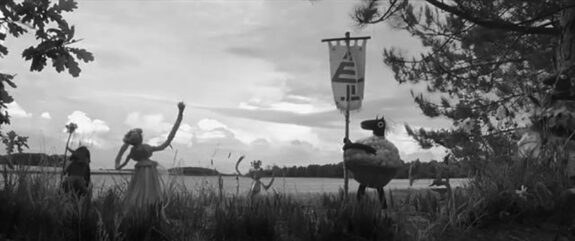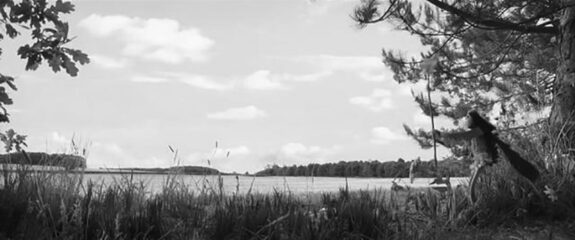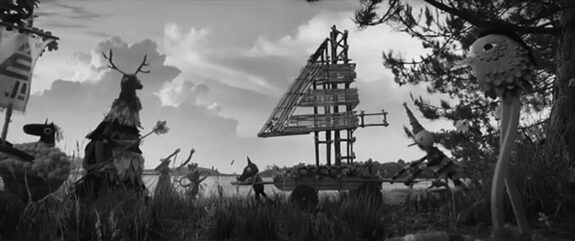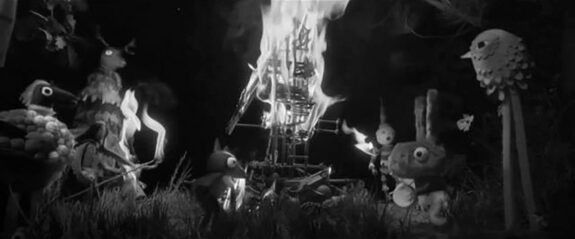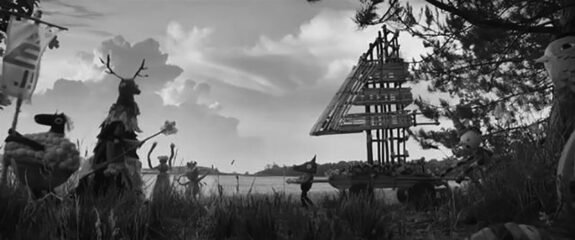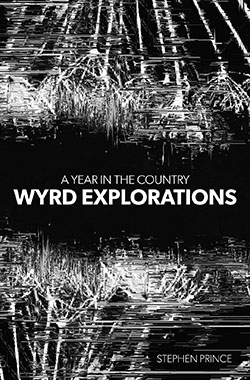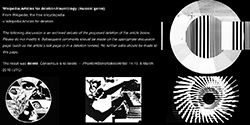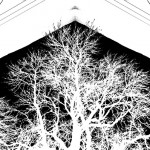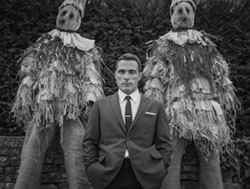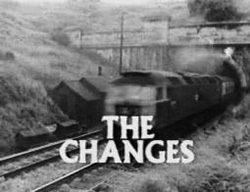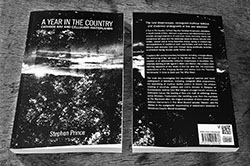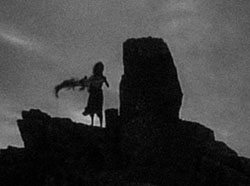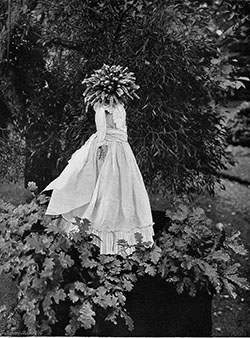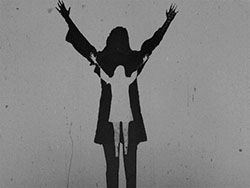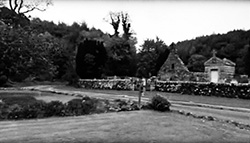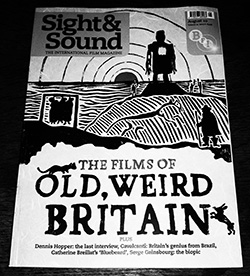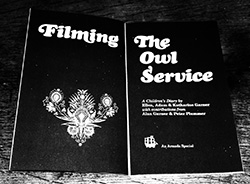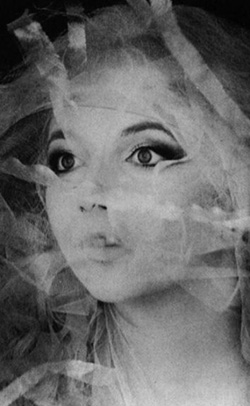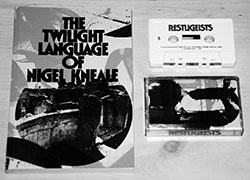Over the years in the A Year In The Country books and at the website I’ve discussed various television series and trailers which could be considered as offering glimpses of Albion in the overgrowth, i.e. mainstream television which to various degrees explores, utilises and expresses a “wyrd” or otherly pastoral sense of rural and folk culture, while also at times variously containing elements of and/or intertwining with folk horror.
Some previous examples I have written about include amongst others: the unsettling “pastoral spook” drama series Requiem (2018); the supernatural folk horror-ish drama series The Living and the Dead (2016); the gently melancholic comic drama series Detectorists (2014-2017) that centres around two rural treasure hunting metal detectorists; the reimagining of Roman history in the drama series Britannia (2018-); the folk horror related themes in some of the episodes of the 2000-2001 remake of the supernatural detective series Randall and Hopkirk (Deceased) (1969-1970); and the “Savage Party” trailer released in 2012 for the Channel 4 soap opera Hollyoaks, which has a playful and almost dreamlike rural temporary autonomous zone aesthetic.
In terms of “Albion in the overgrowth”, the 2018 “Wicker Man” ident for the British television channel E4 could well be grouped amongst the above series and trailer, and in some ways is odder than all of them.
It is an animated short film used as a link between programmes, and seems to variously be channeling 1960s or 1970s British children’s television animated series, some lost Eastern European animation series from an indefinable earlier decade, bucolic calm, folk rituals, folk art and folk horror – in particular The Wicker Man (1973) – all in a brief 30 seconds or so. It’s the kind of thing that you could imagine being part of some semi-forgotten children’s television series originally broadcast back when that Finders Keepers Records would release the soundtrack to.
The animation and figures that appear in the ident are at a notable remove from polished contemporary CGI based work, appearing (I assume) to have been done my hand and have a pleasingly handcrafted folk art-ish feel, and seem to be made from materials such as fabric, wood etc. In terms of their aesthetic and animation style they recall the 1960s and 1970s Smallfilms work by Oliver Postgate and Peter Firmin, such as Bagpuss (1974) and The Clangers (1969-1974), and like those series the ident also seems to offer a glimpse or portal viewing of a magical self-contained world unto itself.
The ident opens on a view over a neatly recently harvested looking field, taking a viewpoint from the uncultivated edges of the field which is where events take place, as though to show that they are at a remove from the norms and orderliness of civilisation. Initially a lone king-like figure walks onto the screen, wearing a cape and holding a flower by its stem as though it is a sceptre. He is vaguely human-like in shape but without facial features, has long thin bendy pipe cleaner-esque limbs and his body/fabric skin are green.
He is soon joined by other figures and creatures, who to varying degrees often have anthropomorphic human characteristics, and they begin folk ritual-esque revels and dancing. The other revellers include, amongst others, two frolicking corn dollies, a sheep that walks on its hind legs and is carrying a flag standard that bears the E4 logo, a strange folk ritual-like pyramidical stag headed creature, a cockerel that only seems to consist of a blue head and unnaturally long stilt-like orange legs, a staring eyed blue headed rabbit and a black and white creature, possibly a cow, made from layered wooden sections with a squared head. The soundtrack during this section mixes the stomp of the king walking, rural field recordings of birdsong etc and a free form seeming acoustic folk tune (loosely) played by the revellers.
A fox wearing human style clothing which also walks on its hind legs and some kind of clown, that is reminiscent of an unsettling skewed memory of a Victorian child’s toy, wheel on a cart that contains a folk art-esque wicker structure that forms the E4 logo. Once this is in place at the centre of the revellers the day darkens and the fox sets fire to the wicker logo, and it is at this point that the ident begins to take a darker turn, and marking this the soundtrack quickly and briefly changes to some form of choral drone.
NIght suddenly descends, the folk music resumes and the revels continue but now there is something, if not bacchanalian, then at least subtly frenzied about it as the participants dance around the burning wicker structure; the king sets light to one of the wicker dollies, which continues merrily dancing, and the clown also seems to be on fire but not making any attempt to halt this. The ident ends but there is a sense that the revels and their transgressions will continue.
What it brings to mind is Mackenzie Crook’s 2018 reimagining of the rural magic realism children’s television series Worzel Gummidge (1979-1989), which in the newer version features a living scarecrow who befriends two visiting children and via preternatural means and with the assistance of his fellow scarecrows helps to mend the seasons which have gone out of joint, and of which I have written:
“Worzel Gummidge is light-hearted, humorous and tender but also at times feels like a friendly nightmare, and it has an air of unsettling unpredictableness, which is heightened by the scarecrows often having a chaotic and unfettered by convention character, particularly when they are gathered together.”
E4’s Wicker Man ident has a not dissimilar sense of both playfulness and an unsettling air, and as in the end of the 1973 The Wicker Man film, which it seems to fairly directly draw from and interconnect with, there is a sense of a folkloric ritual orientated rural community having come adrift.
What both Mackenzie Crook’s Worzel Gummidge and E4’s “Wicker Man” ident both also bring to mind is the (possibly) accidental at times surprisingly dark or unsettling atmospheres of some sections of late 1960s and 1970s British children and young adult orientated rurally set television drama series that have become hauntological and wyrd rural cultural mainstays – such as the drama series The Changes (1975), Children of the Stones (1976), The Owl Service (1969-1970) and also possibly some public information films from that time – with the “Wicker Man” ident sharing with them a sort of head shaking “What? What was that?” aspect.
Elsewhere:
- E4’s “Wicker Man” ident
- The 2019 Worzel Gummidge Trailer
- The 2019 Worzel Gummidge DVD
- The timeslip sequence in Detectorists, soundtracked by The Unthanks
- Requiem trailers etc
- The “Savage Party” Holloaks trailer
- The Living and the Dead photographs etc
- The Randall And Hopkirk (Deceased) DVD
- Bagpuss and friends at the Small Films site
- Finders Keepers Records’ Moomins soundtrack release
Elsewhere at A Year in the Country:
- Worzel Gummidge – Mackenzie Crook’s Albion in the Overgrowth Recalibrating of Mainstream Family Television
- Detectorists, Layered Timeslips, Albion in the Overgrowth, The Unthanks and Secrets Never Told
- Glimpses of Albion in the overgrowth
- Borrowings from Albion in the Overgrowth…
- Borrowings from Albion in the Overgrowth 2… Becometh a Fumetti…
- Detectorists, Bagpuss, The Wombles and The Good Life – Views from a Gentler Landscape
- A Bagpuss Mini-Collection and Portals Into a Magical Never Never Land
- Britannia – Further Glimpses of Albion in the Overgrowth and Layered Psych Collaging by Me & the Bootmaker
- Requiem – Further Glimpses of Albion in the Overgrowth and Related Considerations
- Dominik Scherrer and Natasha Khan’s Soundtrack for Requiem and the Unexpected Appearance of the Language of Angels
- Detectorists – a gentle roaming in search of the troves left by men who can never sing again
- “Savage Party” and Randall and Hopkirk (Deceased) – Glimpses of Albion in the Overgrowth
- The Living and The Dead: Audio Visual Transmission Guide 16/52a
- Requiem – Further Glimpses of Albion in the Overgrowth and Related Considerations



